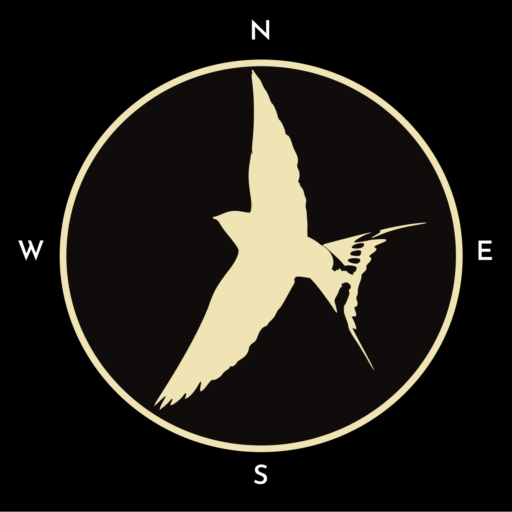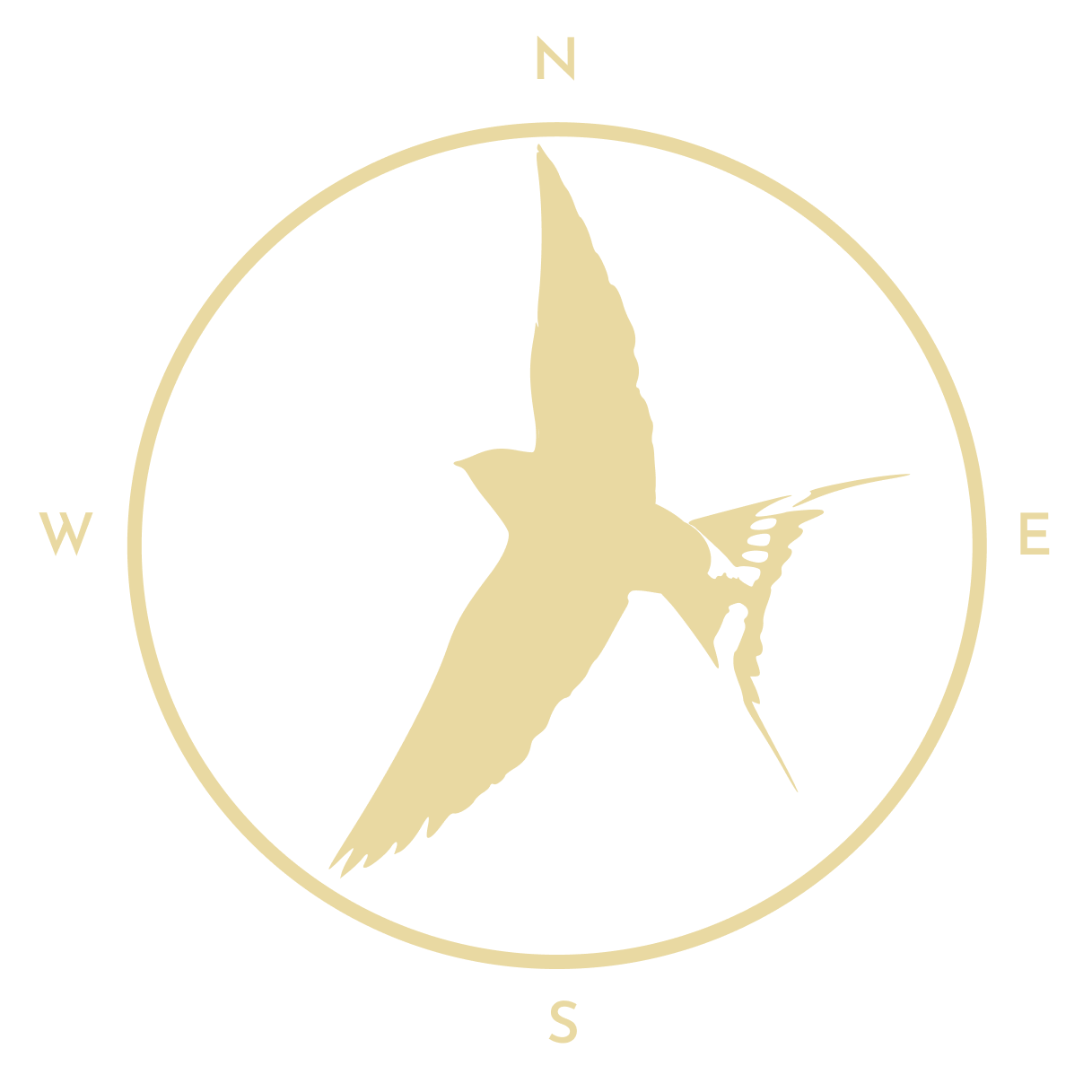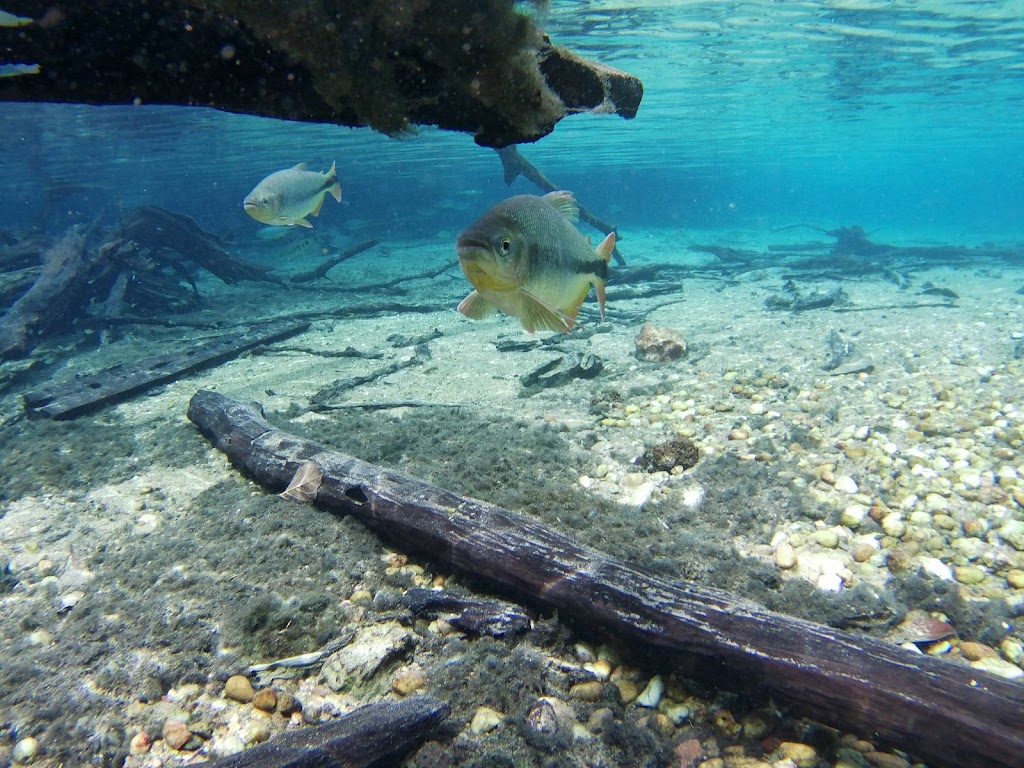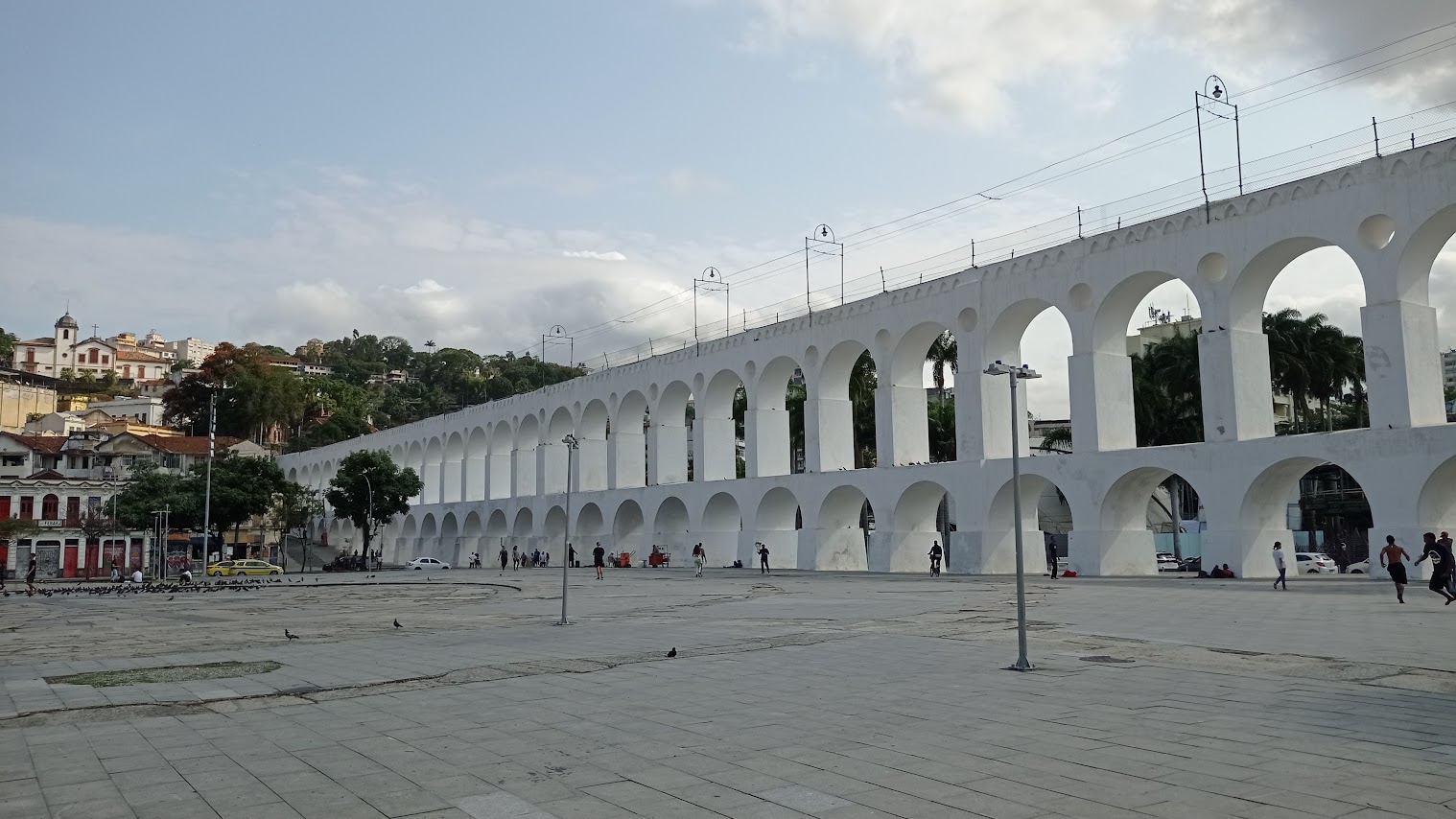Buraco das Araras and Rio da Prata: How to Tour Both (In-depth)
What are Buraco das Araras and Rio da Prata?
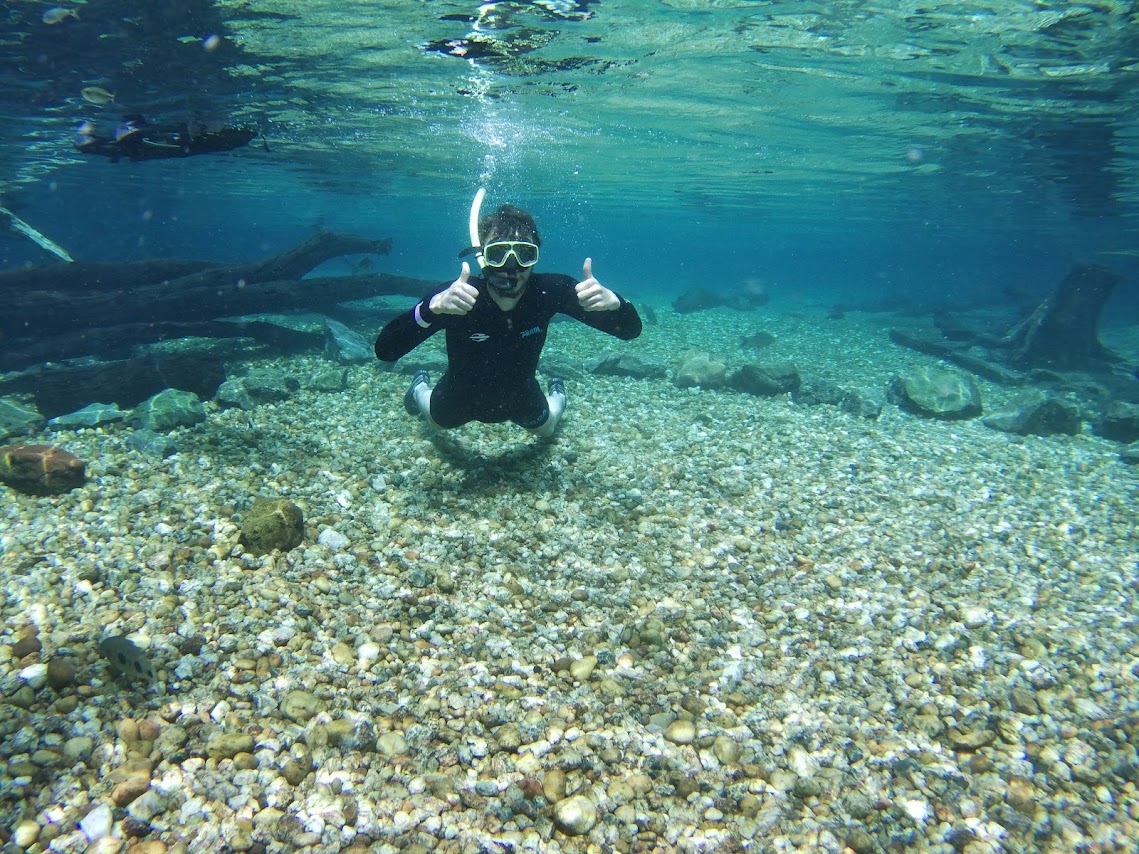

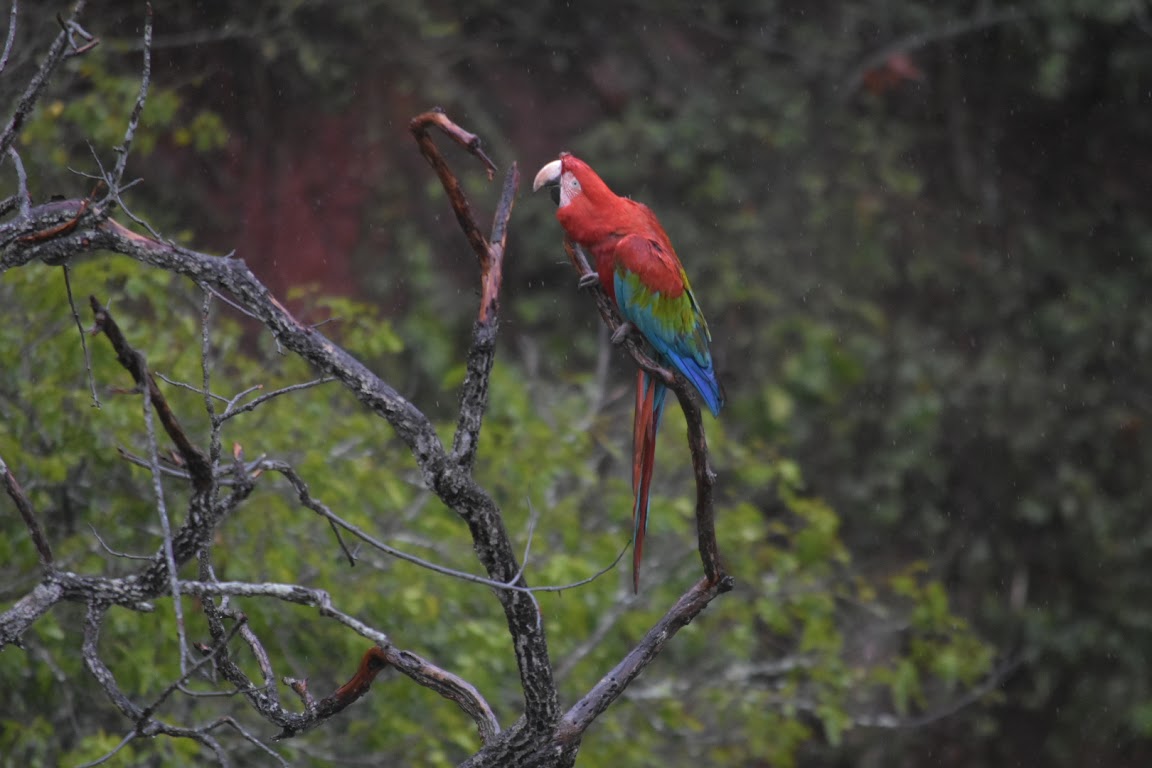

Located an hour south of Bonito, these two sites of natural beauty are quite possibly the most famous in a town that’s chock-full of such sites. Because they’re located on neighbouring farms, many agencies in Bonito will offer you the chance to kill two birds with one stone and visit both – and trust me, you’re going to want to do so.
Buraco das Araras, whose name aptly translates to “Macaw Hole”, is a hundred-metre deep sinkhole amidst a patch of forest where a flock of red and green macaws nest. Standing on a viewing platform and watching them soaring around, their long crimson tail feathers in tow, makes for quite a majestic sight.
Rio da Prata, whose name translates to a more cryptic “Silver River”, is one of Bonito’s best snorkelling locations. The streams, cutting through lush rainforest, are the quintessential image of this south Brazilian town – clear like a swimming pool and full of friendly fish.
Writer’s experience: Visiting Buraco das Araras
After getting off the tour bus, everyone makes their way to a visitor centre, a hut with a reception desk, to sign up for a guided tour. The girls at the reception tell me I’ll be getting an exclusive English-speaking guide, having clocked that I’m not Brazilian. I wait about five minutes, just enough time to pop to the nearby loos. It’s raining lightly, so I get a poncho over my head and backpack before we set off.
We walk down the forest trails, and along the way she shows me some of the forest’s curiosities. One that stands out to me is a wild pineapple near the start. It’s absolutely nothing like the pineapples we’re used to – it’s so tiny that I could easily clasp one of my hands around it.
Granted, I do have big hands, but still.
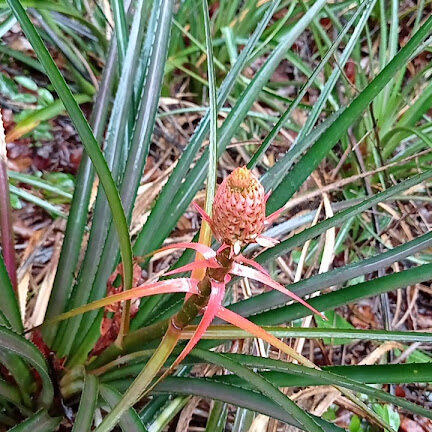

It’s also very sour, so no good for consumption as a fruit – but, the guide tells me, as well as providing food for wild animals, it can also be used to make caipirinhas.
Once we arrive at a wooden viewing platform, a ring of reddish cliffs unfolds beneath me. There’s a small pond and a mini forest at the bottom, complemented by a few hardy trees that have made their home on the cliff ledges. There aren’t any macaws in sight – even with the rain, I wonder to myself how unlucky I’d have to be not to see any.
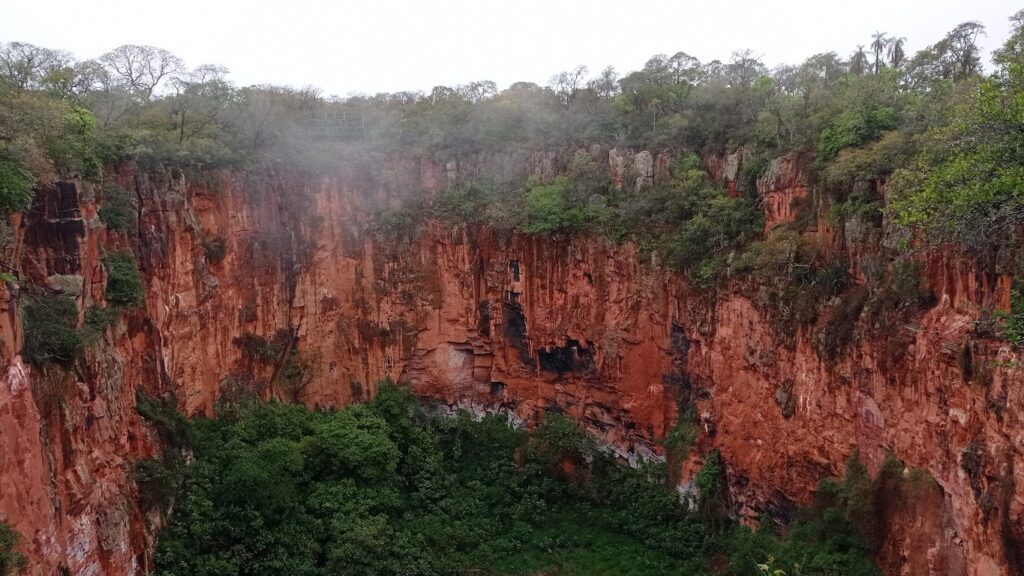

Macaws and the world’s loneliest caiman
Fortunately, the answer is very. Betrayed by their colourful plumage, me and the guide start to pick up a few on the branches – and then, some come flying in, swirling around before landing. Though it isn’t the crimson hurricane of birds that some other visitors describe, each macaw puts on a bit of a show – none fly directly to their nests, instead preferring to soar past, before landing.
Something else my guide points out is a caiman in the pond. It takes quite a bit of scanning with my zoom lens to spot it, and although it’s apparently two meters long, it looks absolutely tiny from this high up. The story goes, a pair of caiman fell into the sinkhole back when it still had a waterfall. They managed to survive by eating animals that fell in and died – the guide told me that on her first day, a tapir had done so. Another source of food came from their own babies – caimans have been known to do this during times of desperation, so moral qualms would have likely been few and far between with this trapped pair. Unfortunately, one of them passed away recently, leaving the other single, childless and hungry. What an existence.
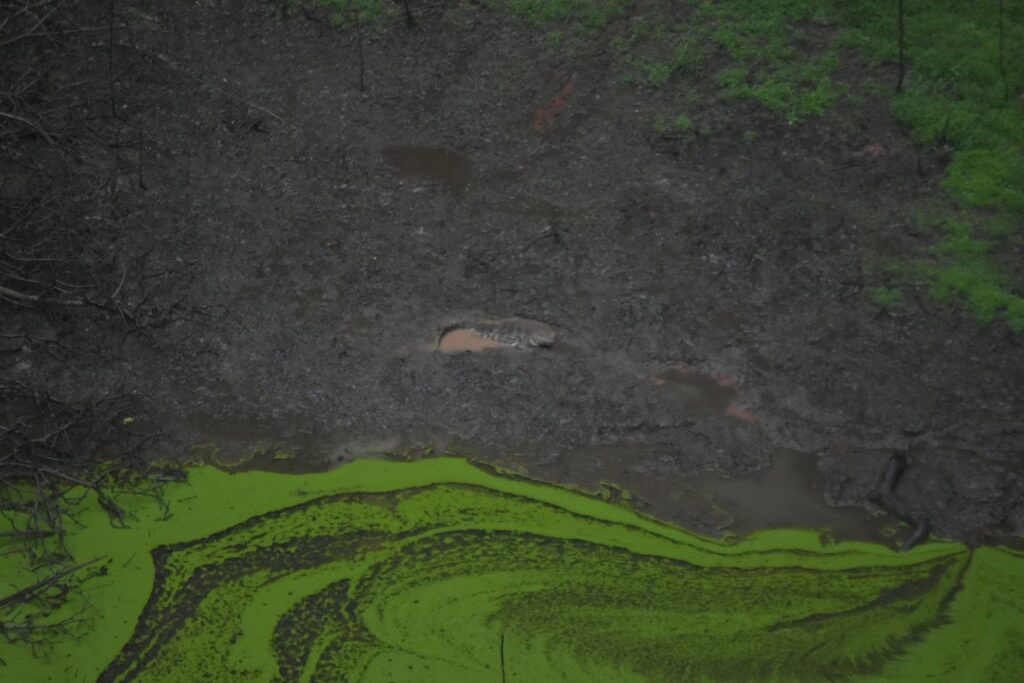

Writer’s experience: Visiting Rio da Prata
Arriving at Rio da Prata, it’s a much busier scene than Buraco das Araras. Perhaps it’s only to be expected from Bonito’s most popular attraction, but I’m sure the disorganisation I encounter later on has something to do with it.
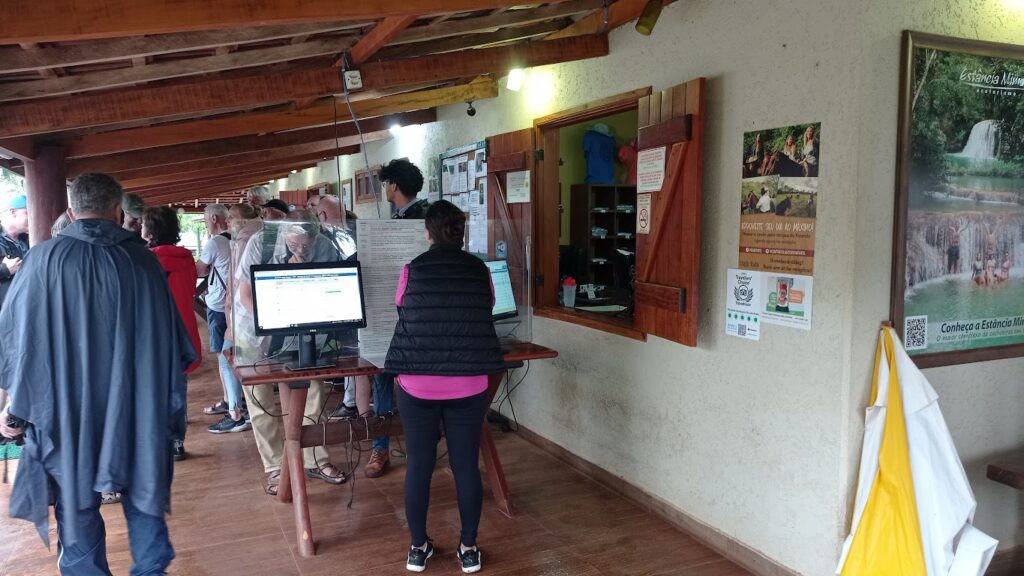

As usual in Brazil, queues here are an exercise in patience – staff take their sweet time entering details into the system, and everyone in front of you will be bantering a bit with them, seemingly oblivious to the number of people yet to come. When my turn comes, I’m put on the 11 o clock tour. And so, I wait. And wait. And wait. By the time it gets to half eleven, I wonder if it’s departed without me. So, I ask, and they say it’s just taking some time since the previous group departed late. Ah, terrific.
Then, with fifteen minutes to twelve, a staff member tells me I’m now on the midday tour. I’m pretty annoyed at this point, but at least I’ve got time to grab some food from the buffet they’ve started to lay out. On offer is the usual Brazilian fare of salty meat, rice and vegetables, but also some artisanal cheese that has me going back for seconds. Some macaws, possibly from Buraco, join us, looking for food to snap up from people’s plates. Not that the visitors, almost all of whom have their phones out by now, seem to mind.
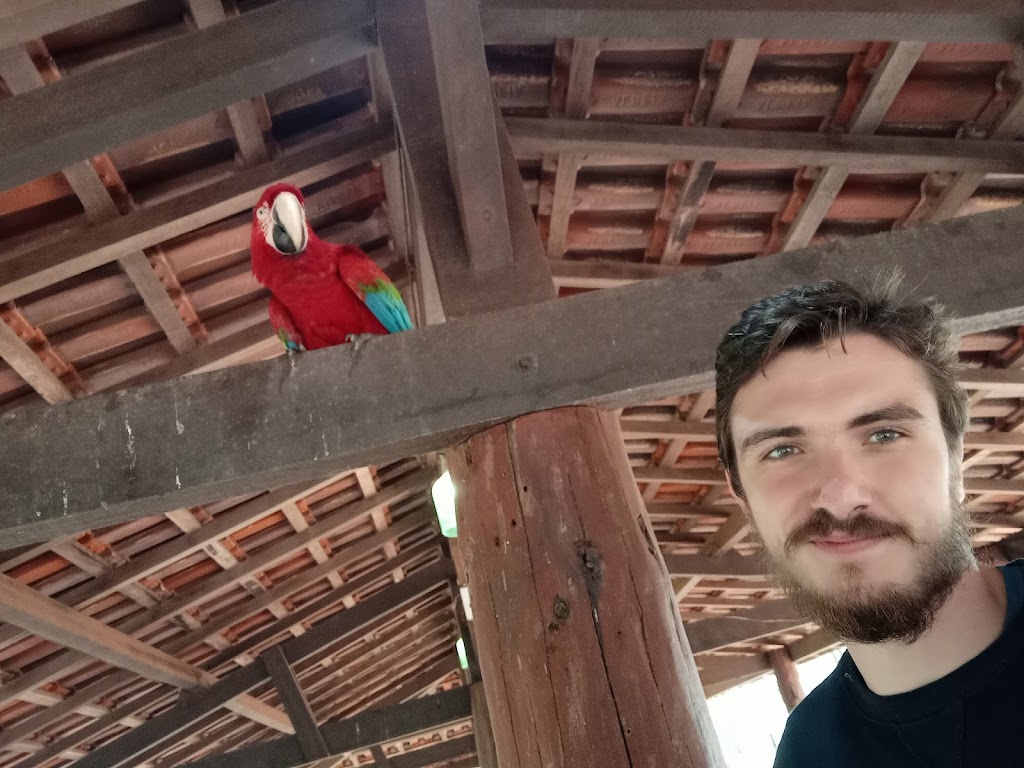

Fortunately, after this organisational hiccup, the tour gets going. After being given and putting on our wetsuits, me and the other foreign visitors that day are taken towards the jeep on which we’ll ride to the stream. The eight-minute ride takes us through some fields pockmarked by termite mounds. At one point, the guide tells the driver to stop and points out a tamandua, a species of anteater. How he saw it I’ll never know, because it’s a good couple hundred metres away from the road. My awe towards his eagle eyes is matched only by my frustration that I don’t have my zoom lens at the time.
We reach the end of the road in the forest. After traversing a three hundred metre trail, we reach a hut by the stream. Life jackets are dished out and, one by one, we make our way into the stream. It’s a little cold at first, but the wetsuit does its job quickly. I look down into the water. It’s crystal clear, and small fish are darting around the submerged tree trunks. Some are still sharp, and we’re warned not to get too close to them. After the instructor gives everyone’s mask a dose of demister, we all head off one by one.
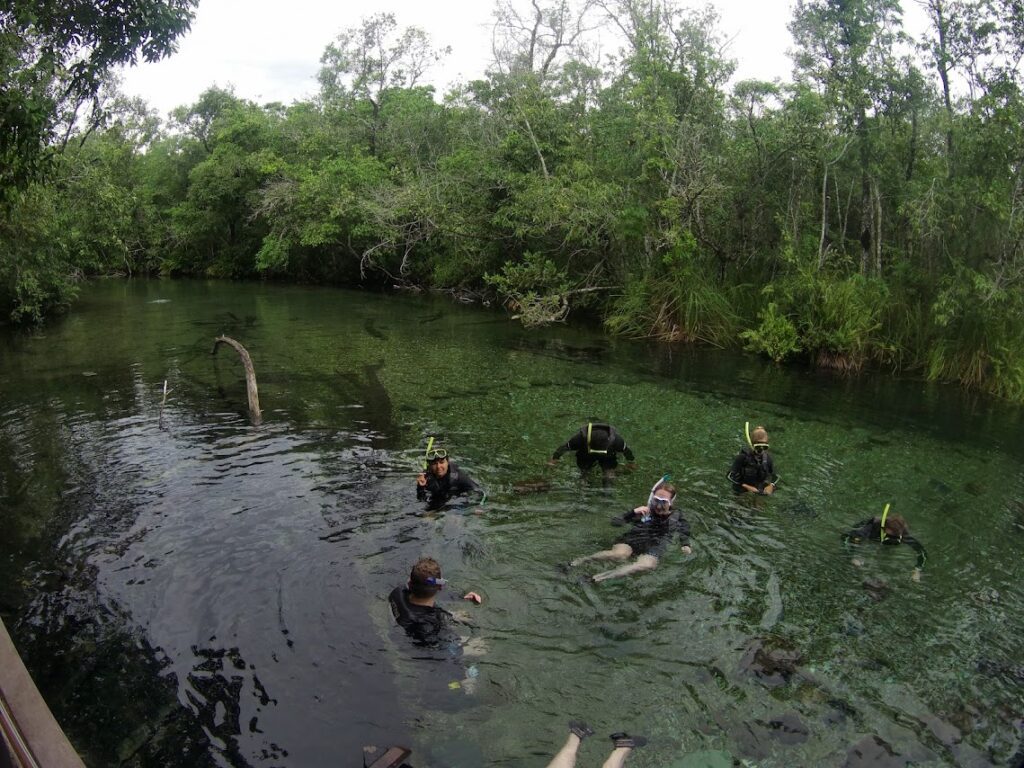

In a single file line, we swim around the pond, and then down the adjoining stream. It’s at this point that swimming becomes unnecessary – thanks to my life jacket, I bob downstream with the flow, as though I’m flying. I look around at the scene unfolding before me: shoals of piraputanga, a ubiquitous fish in the streams around Bonito, are all around. They pay us no mind unless one of us looks like we’re about to touch them. Every now and then another type of fish called dourados makes an appearance, and a couple of times I find a catfish clinging onto a tree trunk.
Every now and then, I turn over onto my back to take in the sight of the forest around me. I’ve seen rainforests before, but never like this – there’s no boat or jeep engine humming and I’m not covered in sweat. I can’t stay like this for too long, for there are people behind me, but I take in the serenity of the moment before putting my face back below water and paddling a bit to compensate for those few idle moments.
Practical details
Booking your tour
Like almost every attraction around Bonito, entry tickets can only be bought at agencies in Bonito itself. Turn up at the door without having done this bit of prep, and you’ll be turned away. For more info on how to do this, take a look at this overall guide to Bonito.
Agents in Bonito are pretty used to offering tours that combine both Buraco das Araras and Rio da Prata – in fact, it may well be their initial offer even if you only request one. However, if you’d only like to do one but not the other, that should be perfectly possible.
Find an agency by walking around town, asking for recommendations from your hostel or other travellers, or clicking about on Google Maps. Personally, I used Aqua Studio Viagens and found them nothing short of helpful and efficient. If you want to make your bookings remotely, much of this will be done by exchanging messages on Whatsapp.
How much does it cost to visit Buraco das Araras and Rio da Prata?
Rio da Prata is R$300 to enter, and Buraco das Araras costs R$92.
On top of that, shared transport should cost around R$90, though this is an optional extra. Vans pick people up from accommodation in Bonito around 7 AM, and return from Rio da Prata at 5 PM. If you have rented a car you’ll be allocated a time slot in which to visit the two.
Insider tip
Life jackets at Rio da Prata are optional, but you should take them for several reasons: they’ll keep you warm by preventing cold water from sloshing around your back; you won’t have to worry about keeping yourself afloat while you look up at the trees or down at the shoals of fish before you; if you bring a go-pro or a dry pouch you can strap it to them; and finally, if you do fancy a little free diving at any point, you can remove it and put it back on after.

